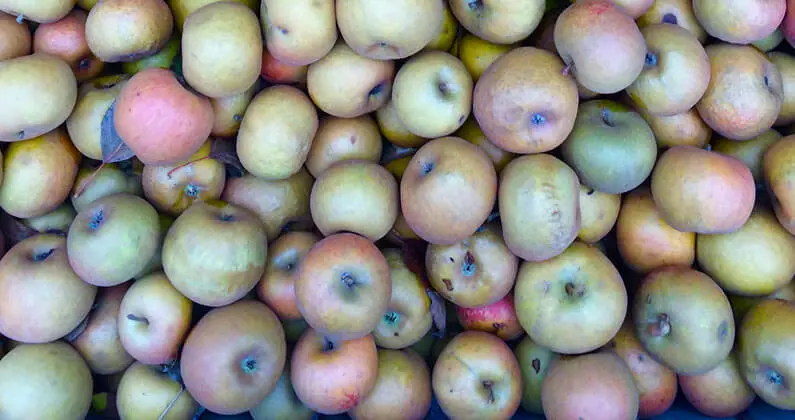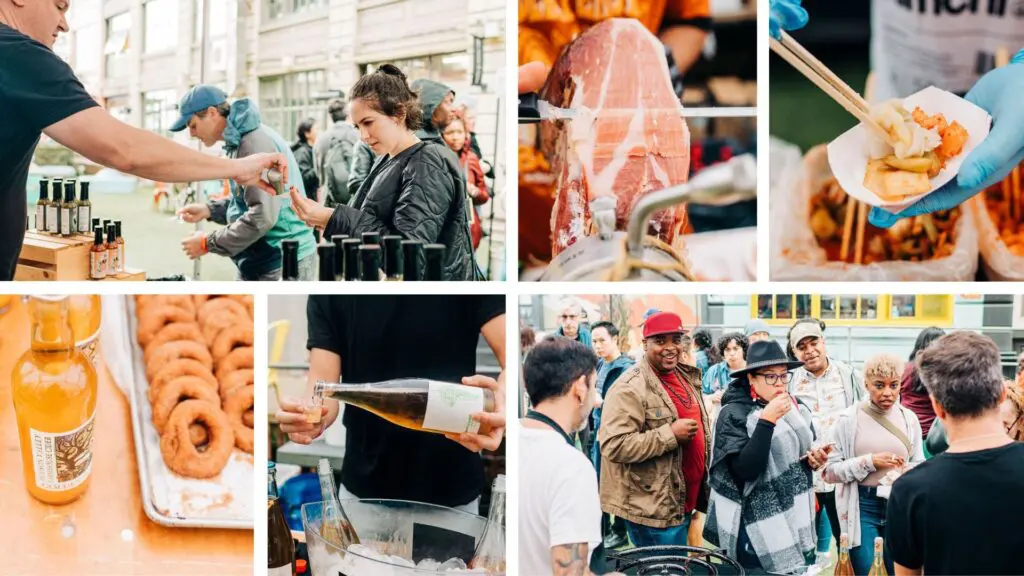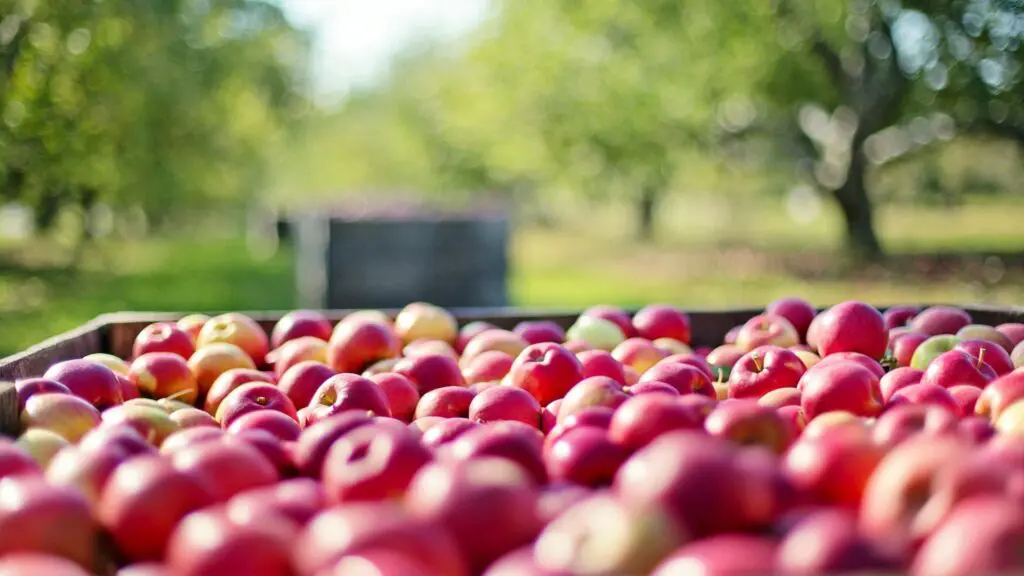Poverty Lane Orchards has been growing tannic apples longer than any modern, commercial orchard. Described as a “21st-century apple farm with a 19th-century variety mix,” Poverty Lane has been farmed by Stephen Wood since he was a teenager, but it wasn’t until the 1990s that he put cider-specific apple trees in the ground of the former dairy farm in Lebanon, New Hampshire. Today, Poverty Lane is proudly the biggest grower of inedible cider apples in the country, yet Wood will be the first to admit even his tenured orchard is still years behind the traditional cider apple trees of Europe.
“We are in a funny position in this that we’ve paid such attention to [the apples] but we really, honestly don’t think we know a damn thing, we are just scratching the surface,” Wood says of his orchard and cidery, Farnum Hill. “We know what we’re trying to make, and we’re not trying to make generalizations about what other people are making, except that it should be made on-purpose by the specific apples you’re using.”
As the final installment of this three-part series (click to read the first and second), we spoke with producers and growers about defining, growing, harvesting and pressing tannic apples and why they are fundamental to a complex cider. Wood wraps it up with his experienced and honest perspective.
You probably have more experience with these apples than most. How would you describe tannic — bittersweet and bittersharp — apples for readers?
What characterizes a bittersweet, in a broad way, is a high level of tannins and low levels of acid. Bittersharp is high-level tannin and high-level acid. In our meager experience, bittersweets tend to have more sugar than bittersharps but that’s not a hard rule. The things that characterize them are the myriad compounds that are tannins, phenols, and their level of acidity.
One of the things we’ve learned to do in a very rudimentary way is to classify tannic apples – ones that have aggressive, hard, bitter tannins and the others with softer, rounder tannins. Nothing replaces the other but they can kind of stand in for the other… You can get some of the similar characteristics if you use different varieties. We use them not to throw tannin in people’s faces — and in fact we’ve read reviews of our cider where people are disappointed in that they can’t guess the tannic character. We use them for the underlying structural elements that they provide. They provide underpinning to all of the other things we try to get into ciders. They add structure to fruitiness and whatever level of sweetness you got and to the bright acidity that we hope characterizes most of our ciders. They’re not in your face tannic, and that’s by design.
Outside of the chemical composition of acid, sugar and tannins, what else contributes to the quality of these apples and their juice?
Where something is grown, how it’s grown, how it’s harvested — those things have a profound effect on the actual characteristic of the juice you wind up with. One of the reasons we have year-in-year-out been able to send many tons of thousands of juice and fruit to other cidermakers is that we pay real attention to that. Never mind what the bin looks like, we want this fruit to be at the highest degree of ripeness but not rotted. Each variety has different treatment to maximize the gifts they can confer from the cider that is made from them.
I’ve been growing apples for 50 years but I don’t feel like I have the drop on this at all… But I do absolutely know — it’s true of apples and grapes alike — the quality of the final thing is very strongly effected by where and how it’s grown, how and when it’s harvested and how and when it’s pressed.
What should a cider drinker be looking for when trying a cider made with these apples?
I think that the best cider has got some sort of complex fruitiness; not necessarily apple, but fruit can be tropical, citrus, stone, all kinds of things, even apples and pears. But some sort of bright, complex, active fruit… We strive to achieve bright acidity and that’s something people should look for — bright, palate-cleansing acidity that lasts through the end. And then we look for, and hope people look for, some sort of structural underpinning. The only way we know how to achieve that is with tannic apples.
The first words we want to hear from your mouth is, “Oh my god, that bottle is empty, should we get another?” We don’t want people to be talking about peach and fricking apricot and acidity and tannic structure. We want the cider to lubricate a conversation about something else — it shouldn’t be talked about itself, it should go with the meal and go with the conversation.
What directions can you give drinkers trying to find ciders made with these apples?
All I can say is you’ve got to almost close your eyes and feel your way around the ciders. They aren’t really in one shape or size. We’re even doing cans – that can is our cider, just in a different [package]. I don’t think there is a guide… Depending on how the label is written and how honest it is, that can help. But I think that, in the big picture, it’s sort of the way I’ve learned about wine, you’ve just got to buy a bottle and subject it to your own standards. It’s trying to get a sense of how seriously the cidermaker took the fruit from which the cider is made, and that can give you all kind of things.





















